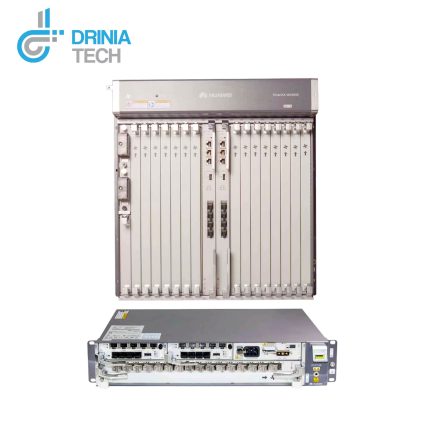HUAWEI MA5600T
The MA5600T is a highly modular platform that can be customized to meet the specific needs of different network operators. It supports various interface cards and modules, including GPON, EPON, VDSL2, ADSL2+, POTS, and CATV. It can also be equipped with a range of advanced features, such as Quality of Service (QoS) management, VLAN tagging and untagging, and Dynamic Bandwidth Allocation (DBA).
The MA5600T can support up to 16 service slots and can be stacked to form a large-capacity access platform. It can provide downstream data rates of up to 10 Gbps and upstream data rates of up to 2.5 Gbps. It also has a built-in redundancy mechanism for enhanced network resilience and can be managed remotely via a web-based interface. Overall, the HUAWEI MA5600T is a highly reliable and scalable platform for delivering high-speed broadband services to end-users in fiber optic access networks. It is widely used by service providers around the world for residential, business, and mobile backhaul applications.
Here are some of the basic specifications for the HUAWEI MA5600T:
- Technology: GPON, EPON, VDSL2, ADSL2+, POTS, and CATV
- Downstream Data Rate: Up to 10 Gbps
- Upstream Data Rate: Up to 2.5 Gbps
- Service Slots: Up to 16
- Redundancy: 1+1 redundancy for Control Board, Fan, and Power Supply
- Network Interface: 10/100/1000M Base-T Ethernet ports, GPON/EPON ports, ADSL2+/VDSL2 ports, and POTS ports
- Management Interface: Web-based interface, Command Line Interface (CLI), and Simple Network Management Protocol (SNMP)
- Power Supply: AC 220V, DC -48V/-60V
- Dimensions (W x D x H): 442mm x 220mm x 315mm
- Weight: 12kg
Some of the advanced features of the HUAWEI MA5600T include:
- Quality of Service (QoS) management
- Virtual Local Area Network (VLAN) tagging and untagging
- Dynamic Bandwidth Allocation (DBA)
- Multiple access control methods
- Automatic protection switching (APS)
- Unified network management system (NMS)
- Redundant control board and power supply for improved system reliability
- Various application scenarios: FTTB, FTTH, FTTC, and mobile backhaul













